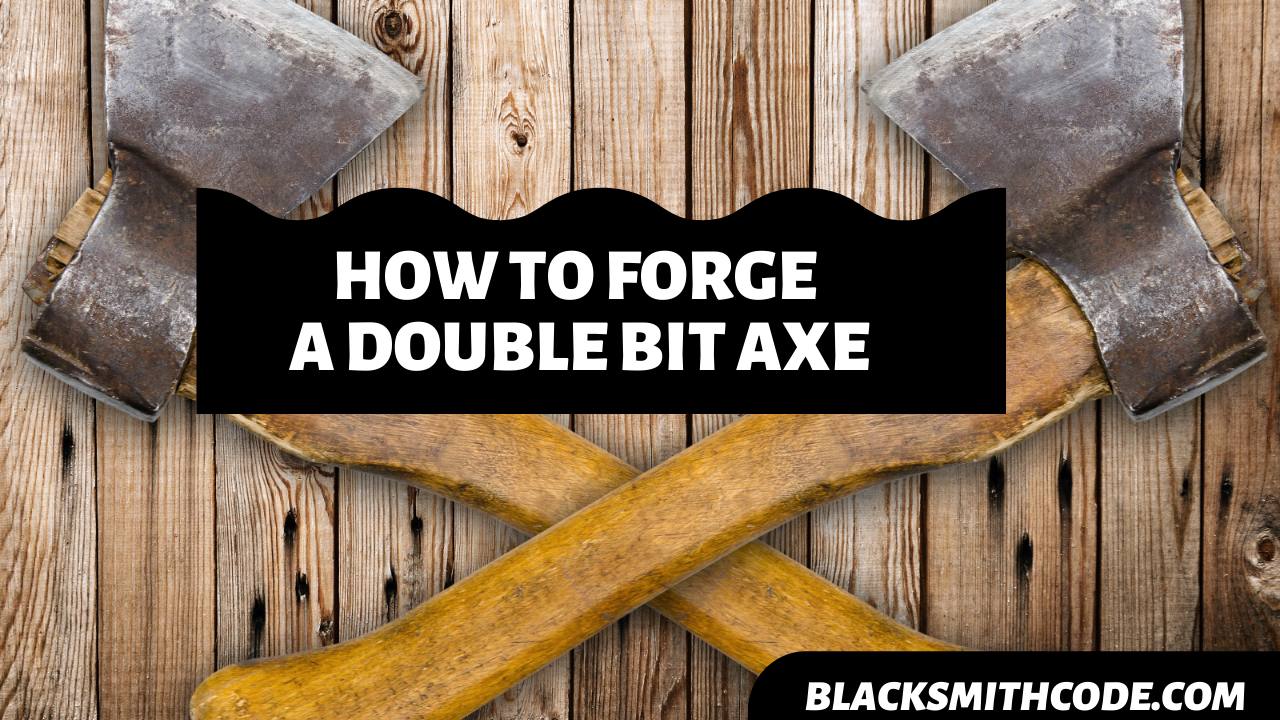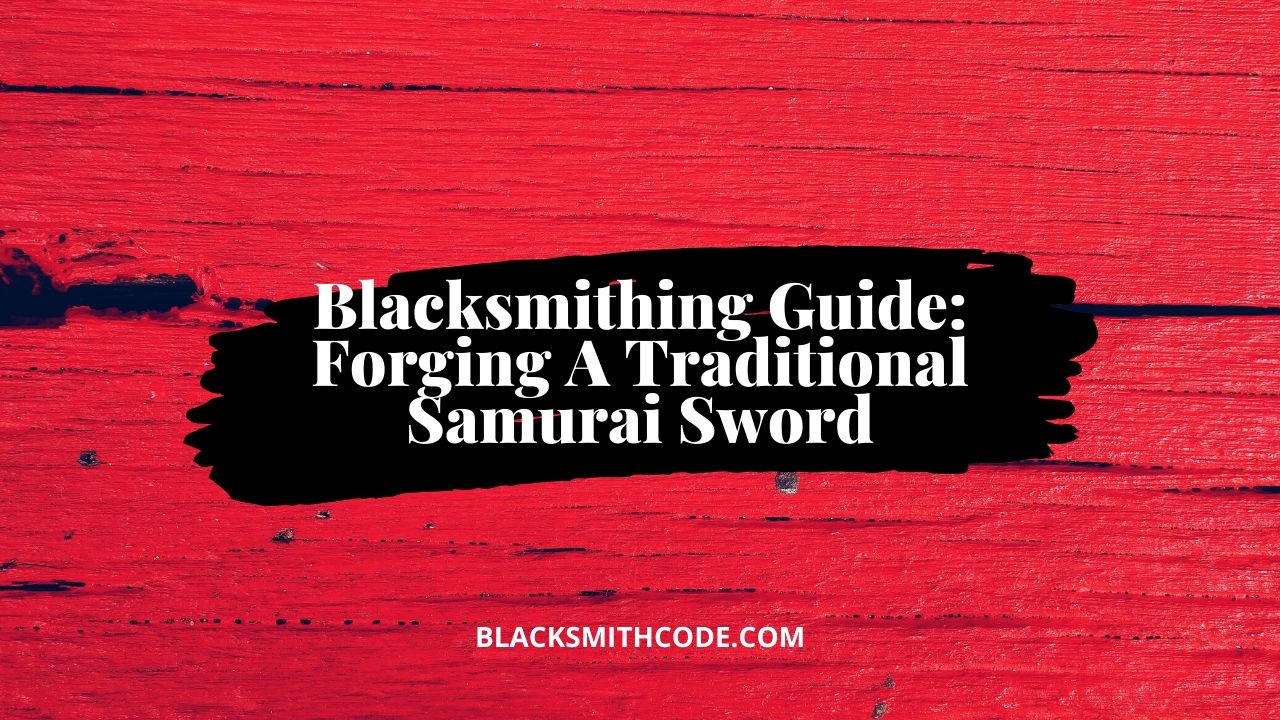Do you know blacksmiths can forge the hardest and sharpest materials? Just as you have a two-edged sword, you can also have a two-edged axe. A double bit axe is simply an axe with two functional sides. Learn how to forge a double bit axe in practicable steps.
A double bit axe is one of the most useful tools in DIY. It is particularly helpful for woodworkers for the felling of trees and splitting lumbers.
Many DIY enthusiasts, homeowners, hobbyists, and professional woodworkers spend a lot on purchasing different axes. However, as a blacksmith, you have the advantage of forging several tools without much stress.
Forging a double bit axe is not as difficult as most people perceive it to be. You will find the process unbelievably easy if you have the right tool, technique, and materials.
There are two basic techniques for forging a double bit axe. You can either use the fold/wrap method or the drifting method. In the guide below, you would find a stepwise guide on how to forge a double bit axe.
Instructions on How to Forge a Double Bit Axe
Step 1: Gather Your Materials
Getting your materials together should be the first thing to do. For forging a double bit axe, you need mild steel of suitable size. Remember, we are using the drifting technique in this process; thus, you might not need a large steel block.
You only need sizable mild steel depending on the size of the axe head you want to create.

Step 2: Measure and Mark
If you are using stock steel, you should measure and cut out your desired length.
Quick Steps
- Measure the suitable length of the axe head.
- Now measure the middle of the steel block you will be cutting out.
- Mark the center with a chisel. Ensure that the mark is deep enough for it to still be apparent even after heating.
- Make the mark on both sides because it is the point where you would be making the drift.
Step 3: Heating
Now, it is time to take your steel block to the forge. Heat the material until it reaches a workable temperature. You should be able to read the temperature of the iron from the color.

Step 4: Make your Drift Eye
Once the billet reaches a workable temperature, retrieve it from the forge and take it to your anvil.
Quick Steps
- Locate the mark you made at the center of the billet before taking it to the forge.
- Hammer down the hot cut along the mark you make.
- Once it is halfway into the billet, flip it over and repeat until the hole is through on both sides.
- Round the edge of the drift and ensure that it is oval and not rectangular. There shouldn’t be any sharp corners in the drift.
- Once the drift takes the right form, open it up to increase the diameter.
- You should ensure that your hammering is only widening the drift and not stretching the material
- You might have to reheat the billet before the end of the process to keep the billet at workable temperature.
Step 5: Form the Edges
What makes an axe is its strength and the sharpness of its edges. Here, you are making double edges for the axe. You can keep a metal or suitable wood in the drift to prevent it from collapsing.
Quick Steps
- Temper the ends of the billet before attempting to open up the edges.
- Hold the billet uprightly between the legs of a vise.
- Use the hot cut to open the edges of the billet by hammering down.
- Open one side, then flip over to forge the other end.
- Pay attention to the depth of your opening to avoid linking up with your drift.
- Make a rasp that is sizable for the cut you made. The rasp will allow you to make the sharp edges of the axe.
- You can cut the rasps a little longer than the axe’s edges to leave room for adjustments and alignment that might result.
Step 6: Hammering
This step is where you give the edge its thickness and sharpness. Master the techniques of hammering while learning how to forge a double bit axe.
Quick Steps
- Hang the rasp in between the edge of the axe and take it to the forge. Heat only one edge at a time.
- Heat the edge to a workable temperature.
- Hammer down until the edges and the rasp blend to give a single layer. The hammering might be rigorous, and you would have to reheat the steel before the end of the process.
- Ensure that you have a perfect weld by letting it cool and observe.
- Flip and repeat the process for the other edge.
- If you have any excess edge/rasp, grind the edges with your grinder to remove it.
Step 7: Heat Treatment
Heat treating the axe edge is essential for eliminating the metal’s internal stress.
Quick Steps
- Heat the billet and allow it to cool slowly at room temperature.
- Heat again and this time around, quench it in water or mineral oil to harden the billet.
- To eliminate the brittle nature that resulted from hardening, heat the billet way below the malleable temperature. Hold it in that temperature for about an hour before allowing it to cool slowly at room temperature to temper.

Step 8: Grinding/Sharpening/Finishing
Use your grinder and another suitable sharpening tool to make the edge of the axe as sharp as possible. You can also use a mixture of turpentine, beeswax, and linseed oil to protect the axe from rusting.
Step 9: Attach the handle
You have the liberty to fix your unique handle. Often, the handle is either wooden or metallic. The size of the handle is dependent on the dimension of the drift.
FAQs on How to Forge a Double Bit Axe
Question
What type of steel is the best steel for forging a double bit axe?
The best steel for forging a double bit axe is mild steel with low carbon content. This type of steel will give the axe head the needed strength and durability.
Question
What is the purpose of a double bit axe?
A double bit axe is useful for cutting lumbers. It does this effectively without wasting any time.
Question
What is the bit of an axe?
The bit of an axe is the sharp edge. Thus, a double bit axe will have double sharp edges on both sides.
Video on How to Forge a Double Bit Axe
Warnings and Precautions
- Ensure proper ventilation in your working space.
- Use a suitable cutting tool for the process.
- Avoid handling hot steel with bare hands and use safety gears.




